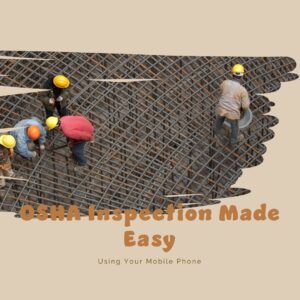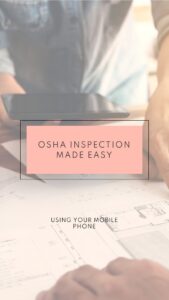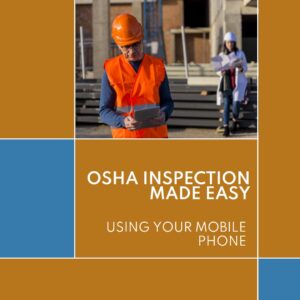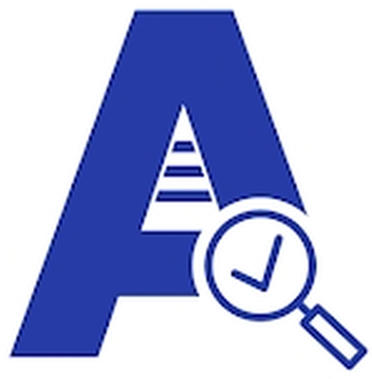OSHA Construction Inspection Checklist
Conducting OSHA construction inspection (Occupational Safety and Health Administration) is vital for ensuring the safety and well-being of workers on construction sites.
Here’s a comprehensive checklist you might use for OSHA construction inspections:
 OSHA Construction Inspection Checklist:
OSHA Construction Inspection Checklist:
General Site Conditions:
- Access and egress routes are clear and unobstructed.
- Site is adequately fenced and secured.
- Housekeeping practices are in place to maintain a clean and organized work environment.
- Adequate lighting is provided for nighttime work.
Personal Protective Equipment (PPE):
- Workers are wearing appropriate PPE, including hard hats, safety glasses, high-visibility vests, and steel-toed boots.
- PPE is properly fitted and in good condition.
- Adequate supplies of PPE are available on-site.
Hazard Communication:
- Chemical containers are properly labeled with hazard warnings.
- Safety data sheets (SDS) are accessible to workers.
- Workers are trained on the hazards associated with chemicals used on-site.
Scaffolding:
- Scaffolds are erected by competent personnel following manufacturer’s guidelines.
- Scaffold components are inspected for defects before each use.
- Guardrails, midrails, and toeboards are installed on all open sides and ends of scaffolds.
Fall Protection:
- Fall protection systems are in place and properly anchored.
- Personal fall arrest systems are worn by workers engaged in work at heights.
- Guardrails or barriers are installed around open edges and floor openings.
Electrical Safety:
- Electrical cords and equipment are in good condition and free of damage.
- Ground-fault circuit interrupters (GFCIs) are used for all electrical circuits.
- Lockout/tagout procedures are followed when working on electrical equipment.
Machine Guarding:
- Moving parts of machinery are adequately guarded to prevent contact.
- Safety guards are in place on power tools and equipment.
- Workers are trained on safe operating procedures for machinery.
Excavations:
- Trenches and excavations are properly sloped, shored, or shielded to prevent collapse.
- Access and egress are provided for workers in trenches.
- Spoils and materials are kept clear of the trench edges.
Ladders:
- They are in good condition and free of defects.
- Ladders are set up on stable and level surfaces.
- Three-point contact is maintained when ascending or descending ladders.
Welding and Cutting:
- Welding and cutting operations are conducted in designated areas with proper ventilation.
- Workers are wearing appropriate PPE for welding and cutting activities.
- Fire extinguishers are readily available and properly maintained.
Confined Spaces:
- Confined spaces are identified and evaluated for hazards before entry.
- Entry permits are obtained and followed for work in confined spaces.
- Workers are trained on the hazards of confined spaces and proper entry procedures.
Fire Safety:
- Fire extinguishers are located throughout the site and properly maintained.
- Flammable materials are stored in designated areas away from ignition sources.
- Emergency evacuation routes are clearly marked and accessible.
First Aid:
- First aid kits are available on-site and adequately stocked.
- Trained first aid personnel are designated and identified.
- Medical services for Emergency are accessible within a reasonable response time.
Emergency Procedures:
- Emergency procedures are posted and communicated to all workers.
- Workers are trained on emergency response procedures, including evacuation and reporting.
- Emergency contact information is readily available and up to date.
Documentation and Compliance:
- Records of safety training, inspections, and incidents are maintained and readily accessible.
- OSHA standards and regulations are followed, and any violations are addressed promptly.
- Corrective actions are documented and implemented as needed.

Regularly conducting inspections using this checklist can help construction companies identify and mitigate hazards, prevent accidents, and ensure compliance with OSHA regulations. It’s essential to involve all stakeholders, including workers, supervisors, and safety officers, in the inspection process to promote a culture of safety on construction sites.

Using existing or creating OSHA construction inspection checklist with eAuditor Audits & Inspections can greatly enhance safety compliance on construction sites.:
eAuditor Audits & Inspections Features to manage OSHA Construction Inspection Checklist:
User Authentication:
- eAuditor Audits & Inspections provides secure login for authorized inspectors or safety officers with User roles and permissions to control access to inspection data.
Dashboard:
- eAuditor Audits & Inspections app dashboard displays overview of upcoming and completed inspections with Quick access to start new inspections or review past ones.
- eAuditor Audits & Inspections provides Notifications for overdue inspections or pending tasks.
Create New Inspection:
- eAuditor Audits & Inspections checklist provides Step-by-step wizard to guide inspectors through the inspection process with Dropdown menus or checkboxes for selecting the location, date, and inspector and Option to add notes or comments for each inspection item.
Checklist Categories:
- eAuditor Audits & Inspections checklist can contain General Site Conditions, Personal Protective Equipment (PPE), Hazard Communication, Scaffolding, Fall Protection, Electrical Safety, Machine Guarding, Excavations, Ladders, Welding and Cutting, Confined Spaces, Fire Safety, First Aid, Emergency Procedures with Each category can expand into a checklist of specific items to inspect.
Checklist Items:
- eAuditor Audits & Inspections checklist can contain checkboxes or dropdown menus to indicate the status of each item (e.g., Pass, Fail, Not Applicable) with Space for adding comments or descriptions for any issues found and Option to attach photos for documenting deficiencies or hazards.
Dynamic Checklist:
- eAuditor Audits & Inspections has ability to customize checklist items based on specific construction site requirements with Add or remove items as needed to tailor the inspection to the location.
Reporting and Export:
- eAuditor Audits & Inspections generates PDF or printable reports summarizing inspection findings with ability to export data for further analysis or sharing.
- eAuditor Audits & Inspections has integration with email or messaging apps for sending reports to stakeholders.
Analytics and Insights:
- eAuditor Audits & Inspections dashboard can provide metrics on inspection completion rates, common findings, and trends over time along with Data visualization tools for analyzing inspection data and identifying areas for improvement.
